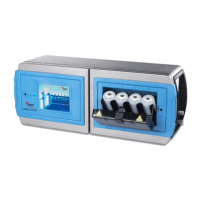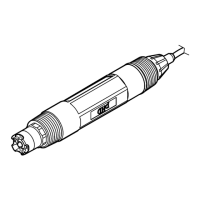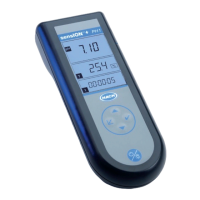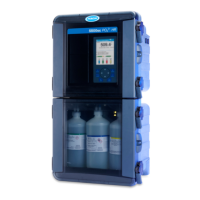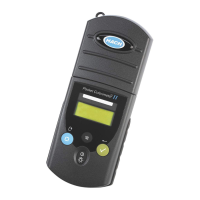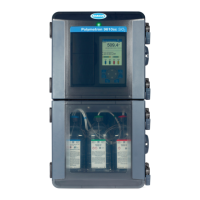1. Push << to show the sliding menu.
2. Push the SETUP icon.
3. Push SECURITY.
4. Select the Users tab. A list of the operator users that have been added shows. The administrator
and factory users are not shown.
5. To add a user:
a. Push the + icon.
b. Enter the full name of the user (5 to 20 alphanumeric or symbol characters and must be
unique).
c. In the ID field, enter a unique user identifier (5 to 15 alphanumeric or symbol characters).
d. Enter a password for the user (5 to 15 alphanumeric or symbol characters). Passwords are
case sensitive.
e. Enter the password for the user again to confirm.
f. To make the user change their password at the next logon, select Change Password.
Note: Password changes are recorded in the audit trail and password history list. New and old passwords
are not recorded in the audit trail.
6. To change a user:
a. Select a user.
b. Push the triangle icon.
c. Edit the fields as necessary.
Note: To exit and not save, push the "x" icon.
7. To delete a user:
a. Select a user.
b. Push the "–" icon.
c. Push Yes to confirm.
About backdoor passwords
If administrators or factory personnel forget their passwords, they may get temporary access with a
backdoor password supplied by factory service. Upon successful sign on, the analyzer prompts the
user to change the password.
Contact technical support to get a backdoor password for the analyzer. To get the password, the
factory asks for the serial number and current date shown on the analyzer. Have this information
ready.
Show the audit trail
Only administrator and factory users can see the audit trail. Any additions, changes or deletions to
the analyzer configuration are recorded in the audit trail with the:
•
Keyword ("added", "modified" or "deleted")
• Information affected
• Old value if applicable
• New value if applicable
• Full name of the user that did the operation
• Date and time of the change
System events such as logging in and exporting data are also recorded in the audit log.
1. Push << to show the sliding menu.
2. Push the SETUP icon.
3. Push SECURITY.
4. Select the Audit trail tab. The audit trail shows. The audit trail shows the filtered audit trail data.
English 35
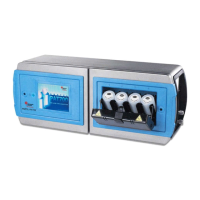
